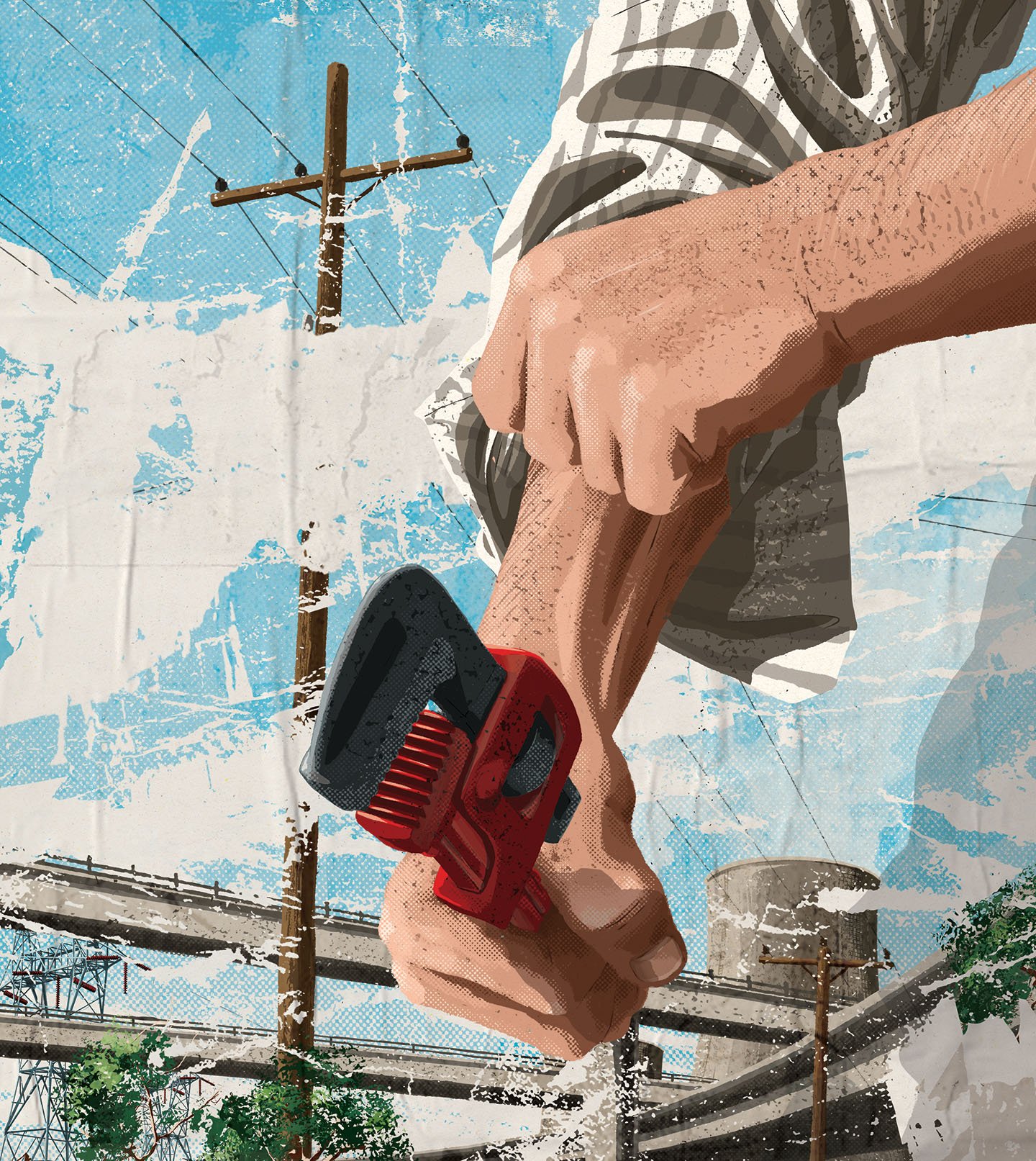
Please remember that the value of an investment can fall and you may not get back the amount invested.
From code to concrete: the nature of growth is changing, according to Spencer Adair, manager of The Monks Investment Trust.
“If software has been the pre-eminent source of growth over the past 20 years, perhaps physical hardware will replace it as the main source of growth for the next 20,” he says.
Adair believes that gritty, physical companies that build things in the material world – gravel producers, plastic pipe makers, electrical contractors – are poised to thrive as advanced economies confront the urgent need to reconstruct everything from highways to power grids.
That bodes well for Monks’ holdings, such as Eaton, Comfort Systems USA, Martin Marietta Materials and Advanced Drainage Systems, all of which stand to benefit from the great American rebuild.
Adair is positioning Monks to benefit from an epic swing towards the material world as the US legislates for a jaw-dropping $2.2tn to be spent over the coming decades upgrading the country’s tired infrastructure.
Potential beneficiaries help make up about a sixth of Monks, which groups them under a ‘repair, renew, revitalise’ theme. That group also includes global firms involved in the energy transition and producers of critical raw materials.
Boomtime for builders
Among the builders and builders’ merchants, Adair points to Eaton, an electrical contractor. In a recent update, the American-Irish company totted up all the building projects announced in 2022 in the US and Canada. It came up with a total of $860bn in planned megaproject spending – about three times the normal rate.
“We think this is a 10-year-plus period of abnormally high growth for the likes of Eaton,” Adair says.
The unusual level of growth is already putting strain on a limited supply of skilled labour. Comfort Systems USA employs roughly 15,000 people and installs heating, ventilation and air conditioning systems.
Historically, about half of the Houston-based company’s revenue was booked by the start of the year. That has surged to 90 per cent as customers pay upfront to ensure access to Comfort’s highly trained workforce.
Other key shortages are developing in raw materials. Adair enthuses, for instance, about the outlook for Martin Marietta Materials, an owner of quarries that produce construction aggregates, such as sand and gravel. As builders scramble for supply, prices for those aggregates are soaring at their fastest rate in decades. Yet Martin Marietta doesn’t have to worry about new competition emerging any time soon because getting permits to develop a new quarry typically takes five years.
“And that is before you even start constructing the quarry,” Adair says. “It’s probably seven to 10 years before you actually begin to produce materials.”

Illustrations by Mark Smith
A new Marshall Plan
To be sure, it’s not just traditional building materials that should get a lift from the infrastructure boom. Innovators, including Advanced Drainage Systems, should also benefit. The Ohio-based company has developed plastic storm drains that are lighter and faster to install than conventional concrete ones.
“Advanced Drainage is one of North America’s leading plastic recyclers and makes storm drains that last 100 years,” Adair says. “It’s a faster, cheaper, greener alternative,” he adds, that could be a winner over a long infrastructure boom ahead.
To put the scale of that projected spending in perspective, Adair reaches back to the late 1940s. “Think of the Marshall Plan,” he suggests.
That world-shaping US initiative to rebuild post-war Europe’s shattered economic infrastructure was worth about $170bn in today’s money.
In comparison, the $2.2tn stimulus laid out in the last few years of legislation amounts to the equivalent of 13 Marshall Plans.
A good chunk of this massive outlay will go towards fixing the country’s crumbling roads, bridges and water systems. In its most recent assessment, in 2021, the American Society of Civil Engineers said 43 per cent of US public roadways were in poor or mediocre condition. It noted that somewhere in the US, a water main breaks every two minutes on average.
“Much of the current installed base was built during the boom times after the Second World War,” Adair says. “It is badly in need of renewal.”
Wider economic transformation
However, it’s not just the need to patch up the disintegrating legacy of the past that is propelling today’s infrastructure boom. It also reflects how Washington wants to re-orient the US economy.
Covid-19 exposed the fragility of global supply chains. It demonstrated how easily a crisis could shut down far-flung manufacturing networks and cause shortages of crucial components.
US policymakers are now determined to make their national economy more resilient. They want to encourage industries to make products domestically rather than relying on China as the go-to manufacturing destination. Increasing friction between Washington and Beijing has added a further note of urgency. Notably, the US no longer wants to depend on Taiwan as the sole source for many key computer chips – the island’s proximity to an increasingly militant China makes it just too vulnerable.
To prevent future disruptions, the recent CHIPS (Creating Helpful Incentives to Produce Semiconductors) Act includes generous tax breaks and subsidies to encourage semiconductor makers to set up plants in the US.
The Inflation Reduction Act adds a further large dollop of money for green energy. It aims to foster the installation of more wind turbines, solar panels and electric vehicles. That, in turn, boosts the need for smarter, more adaptable electrical grids to connect new power sources to homes and factories.
Could a change of administration in Washington disrupt this happy course? Adair thinks a spending U-turn is unlikely. Much of the recent legislation passed with bipartisan support. Furthermore, the need for infrastructure spending is based on long-term trends difficult for any administration to ignore, such as the need to replace ageing roads and the shift to green energy.
Moreover, Adair sees many of the same trends playing out in Europe and argues that an infrastructure boom could also happen there. Investors searching for a new theme should take heed: it’s time to get physical again.
Important information
Investments with exposure to overseas securities can be affected by changing stock market conditions and currency exchange rates.
This article does not constitute, and is not subject to the protections afforded to, independent research. Baillie Gifford and its staff may have dealt in the investments concerned.
The views expressed are not statements of fact and should not be considered as advice or a recommendation to buy, sell or hold a particular investment.
Baillie Gifford & Co Limited is wholly owned by Baillie Gifford & Co. Both companies are authorised and regulated by the Financial Conduct Authority and are based at: Calton Square, 1 Greenside Row, Edinburgh EH1 3AN.
The investment trusts managed by Baillie Gifford & Co Limited are listed on the London Stock Exchange and are not authorised or regulated by the Financial Conduct Authority.
A Key Information Document is available by visiting bailliegifford.com





